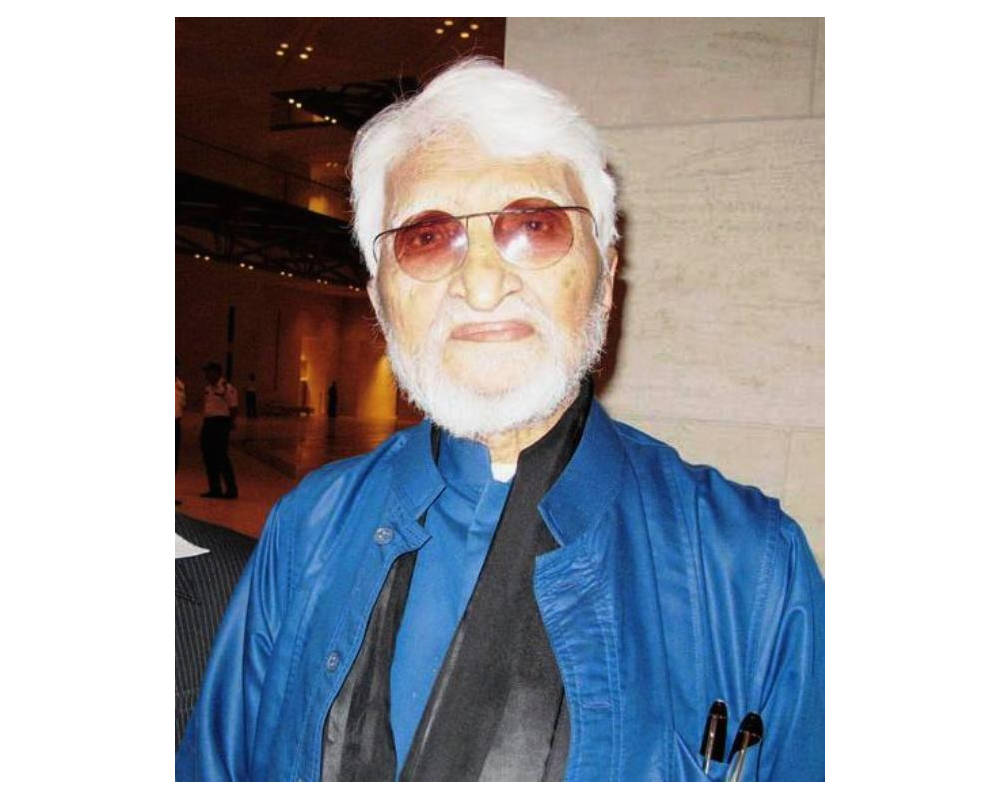[By Ayaz360, Public Domain]
Good morning,
In Incarnations, Sunil Khilnani gives us some glimpses from the lives of a wide range of Indians—from the Buddha to Ambani, from Visveswaraiah to MF Husain.
Here are two stories from the life of Husain. Husain passed away this month in 2011 but these stories—highlighting his sympathy and optimism—hit us hard, especially in today’s context.
Khilnani writes:
“‘I don’t need any degree because of this brush in my hand,’ he recalled telling his family upon finishing high school. ‘If nothing happens, I’ll whitewash the walls.’ He later described that decision as his ‘great liberation, one of the greatest events of my life—that I got the freedom to work’.
“He didn’t have to whitewash much. Instead, he began his career as a professional artist in Bombay, where he painted garish Bollywood film hoardings for a pittance. Typically working outdoors, sometimes between monsoon downpours, he mastered with confident strokes a scale and sense of proportion that other artists working on large canvases would have required detailed sketches and grids to pull off. Years later, when extremist vandals ransacked his home, destroying paintings worth millions on the market, he accepted it with equanimity: ‘I know how it is to work so hard on a hoarding that is put up for only a couple of weeks, and then destroyed. Isn’t it funny?’”
♦¤♦¤♦¤♦
“But a decade later, when another nude, Bharat Mata (‘Mother India’) was printed as the cover of a catalogue, the antagonism was too great for an artist in his nineties to dismiss. One extremist group announced a reward of about $11 million for the painter’s head; macabrely, money and gold were specifically offered for his hands and his eyes.
“‘Had I been forty, I would have fought them tooth and nail,’ he said in an interview. Instead, he left for Qatar and London—never to return, but consistently, fundamentally optimistic. ‘This is about a few people who have not understood the language of Modern Art,’ he commented while in exile. ‘Art is always ahead of time. Tomorrow they will understand it.’”
Do share your thoughts with us.
Have a great day!
[FF Exclusive] Bollywoodian woes
The Hindi film industry, also known as Bollywood, is in trouble. Industry observers are in wait-and-watch mode to see how Aamir Khan’s Laal Singh Chaddha fares at the box office. “Even Shah Rukh and Salman Khan, the two pillars of the industry, haven’t stirred either during or after the pandemic, after a string of flops before that,” writes Indrajit Gupta, our co-founder.
To rub salt on wound, “films released by the South Indian film industry have continued to generate box office hits. A majority of South Indian language films—Jathi Ratnalu, Pushpa, KGF Chapter 2, RRR and Doctor—dominate the Indian box office charts (there are 31 films that crossed worldwide collections of Rs 20 crore or more),” Gupta points out. That is why, “Bollywood is now scrambling to form collaborations with South Indian filmmakers and production houses. The fact that Bollywood is now forced to use big banner films from the South as a crutch is a pointer to the crisis that’s brewing inside.”
But, he writes, the industry has itself to blame. He traces the roots of this to the pandemic when they started selling rights to streaming platforms. As opposed to that, producers in South India stuck to their guns and stayed focused on the longer term. Will this fundamentally alter the structure of the Hindi film industry? Gupta’s narrative has pointers to how this story will pan out.
Dig deeper
Resuscitating traditional ads
Even as the world discusses the death of advertising in traditional media, Harvard Business Review points out that fatigue is setting in. And that advertisers are going back to traditional media to reach their audiences.
“MarketingSherpa reports that more than half of consumers often or always watch traditional television advertisements and read print advertisements that they receive in the mail from companies they are satisfied with. Indeed, research by Ebiquity suggests that traditional media channels—led by TV, radio, and print—outperform digital channels in terms of reach, attention, and engagement relative to costs. This performance differential is amplified as costs of online advertising have increased, especially when accounting for impression, click, and conversion fraud—whereas the costs of traditional media have fallen. It simply makes good economic sense to rebalance spending away from digital clutter.”
Targeted advertising is also on its way out “with Google phasing out the third-party cookie on Chrome browsers by late 2023 and Apple implementing changes to its iOS14 operating system, the death of third-party cookies is imminent.”
Traditional advertising that was in coma is “headed for growth for the first time in a decade,” they believe.
While this sounds interesting and they have the data to back them up, it is in a Western context. Your thoughts?
Dig Deeper
No place for old men
Now that the stock markets are witnessing much volatility, veterans are sharing their narratives of what it means to live through bull and bear cycles. This write-up by Frederik Gieschen is on why it makes sense to be younger with no memory or scar tissues. This sounded counter-intuitive and got our attention.
“In the book The Money Game, written during the 1960s bull market, a portfolio manager nicknamed the Great Winfield proudly shows the author his team of young analysts who he calls his ‘kids.’”
“My boy,” said the Great Winfield over the phone. “Our trouble is that we are too old for this market. The best players in this kind of a market have not passed their twenty-ninth birthdays. Come on over and I will show you my solution.”
“‘This is a kids market,’ he explains.’ The kids were willing to buy computer leasing companies because the need for computers was ‘practically infinite’ and earnings would rise ‘a hundred percent’ this year, double next year, and will double again the year after. The surface has barely been scratched.
“Unlike the author, the analysts were not being held back by the bad memories of bear markets past.”
“Look at the scepticism on the face of this dirty old man,” said the Great Winfield, pointing at me. “Look at him, framing questions about depreciation, about how fast these computers are written off. I know what he’s going to ask. He’s going to ask what makes a finance company worth fifty times earnings. Right?
“You can’t make any money with questions like that,” said the Great Winfield. “They show you’re middle-aged, they show your generation. Show me a portfolio, I’ll tell you the generation.”
“Look at him, that middle-aged fogey. He’s shocked. A portfolio selling at a hundred times earnings makes him go into a 1961 trauma. He is torn between memory and desire.”
Gieschen does file a caveat: “This is not to say great investors don’t have good memories (many seem to have photographic ones) or that we should not invest time in post-mortems and learning from history and mistakes. As Ray Dalio put it: ‘pain plus reflection equals progress.’”
He goes on with his argument in much detail and presents evidence. “But there is a danger of getting stuck in this failure-driven learning loop of contemplation that can leave us with self-doubt and hesitation. And the more emphasis we put on memory and lessons from specific situations, the more we may close ourselves off to situations that share similarities but should be viewed with fresh eyes.”
We’d love to hear how this argument lands with you.
Dig deeper
Modern art

(Via WhatsApp)
Found anything interesting and noteworthy? Send it to us and we will share it through this newsletter.
And if you missed previous editions of this newsletter, they’re all archived here.
Warm regards,
Team Founding Fuel

